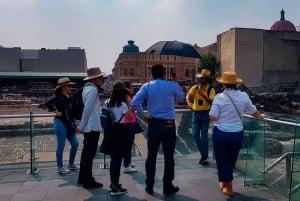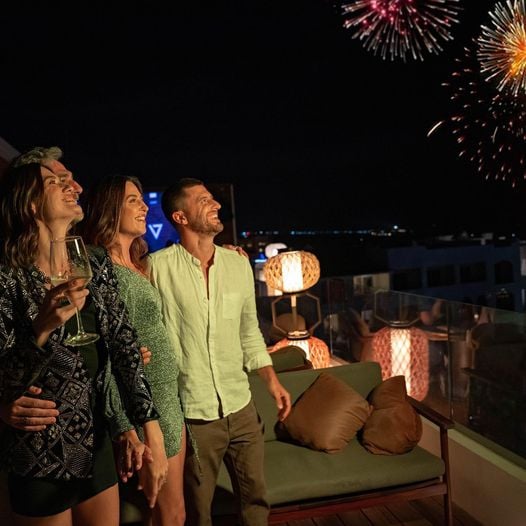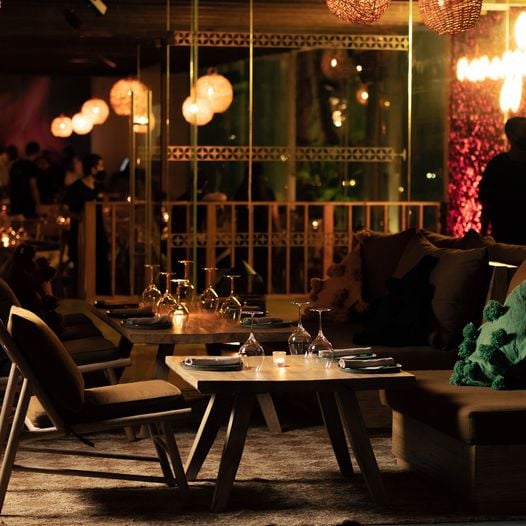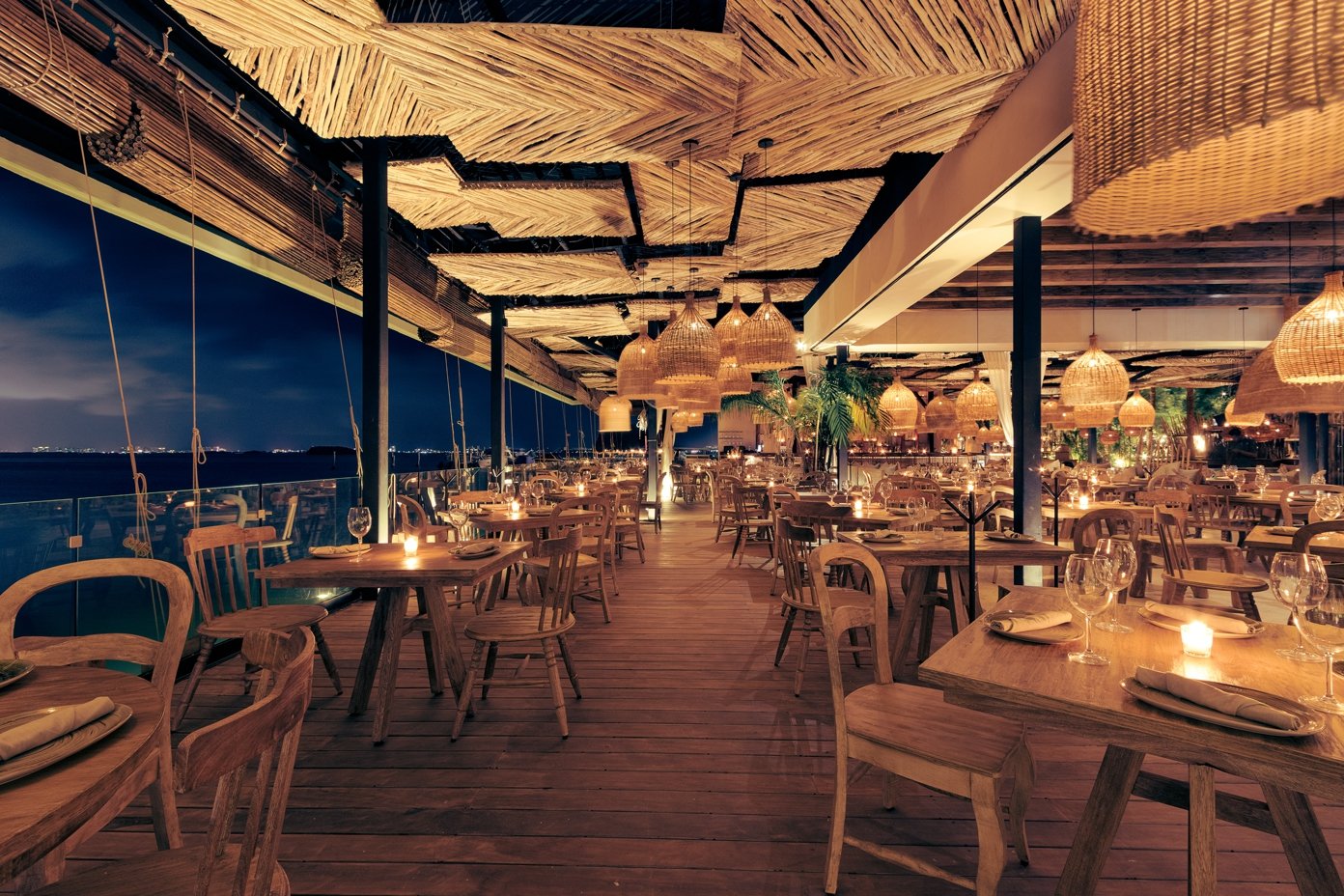Major Temple Museum
Book Top Experiences and Tours in Mexico:
If youʻre booking your trip to Mexico last minute, we have you covered. Below are some of the top tours and experiences!- From Cancun: Day Trip to Tulum, Cenote & Playa del Carmen
- Mexico City: Historic Downtown Walking Tour
- Bacalar: Group Sailing Trip with Swimming and Drinks
- From Riviera Maya: Mayan Ruins & Sian Kaan Reserve Tour
- Cabo San Lucas: 4-Hour Snorkeling Cruise with Open Bar
Major Temple Museum

Monolith discovered in the excavations of the Temple, representative of the goddess Coyolxauhqui
Headquarters of Mexican representatives and meeting point between the Spanish conqueror Hernán Cortés and the supreme Tlatoani, Motecuhzoma II, the Temple Major has witnessed important events, from the flourishing of an entire empire to the fall of it, in whose ruins colonial and modern Mexico was cemented, which gives identity to what is now the Mexican people.
In Mexico City, we have the possibility to contemplate different buildings of all time: the post office building, typical of the Porphyrian era or the metropolitan cathedral, symbol of religious unity and that took three hundred years to build. But we have an architectural structure that was "hidden" for many centuries, and it was until the 70s of the last century that he saw the light again. I refer to the Greatest Temple, the greatest image of the greatness and might of the Mexican empire.
But let's make some history and travel back in time to the year 1325, the time of the founding of the capital of what would be the largest empire in North America, the Mexican empire, Mexico Tenochtitlán.

Snake in the Great Temple
Following the narration that tells us about the pilgrimage of the Aztecs, it tells us that they left a place called Aztlán, and that after long years of traveling they arrived in the valley of Mexico, which was dominated by two peoples, the Tepanecas in Azcapotzalco and the colhuas in Culhuacan. Thus the Mexicas served the two local powers as servants and mercenaries, and it is from Culhuacan from which their first rulers, the Huey Tlatoani, begin to emerge.
From the lord of Azcapotzalco they obtained permission to settle on an islet, where they began to build their capital, managing to win earth to the lake through chinampas. According to the myth, the guardian god of the Mexicas, Huitzilopochtli, gave them the sign by which they would recognize the land he had promised them, consisting of an eagle standing on a nopal devouring a snake.
It is precisely in that place that the adoratory for the god is built, the first stage of the Major Temple that would later become the largest structure of the city, located in the ceremonial center.

Some details that make up the remains of the main building of the Mexican people
At its greatest time of splendor was a double temple, formed by the characteristic trunca pyramid typical of Mesoamerica; It was about 60 meters high crowned at its top by two temples or "cues" - as the Spaniards called them - dedicated, the first, to Tláloc, god of rain, located to the north and painted blue, and the other in honor of Huitzilopochtli, guardian and war god, located to the south and painted red.
The discovery of the ceremonial center was, like most of the most important finds in the history of huminess, casual. On February 21, 1978, a group of Light Company workers carried out excavation work on the first painting and one of them struck a very large stone, communicated to the Company station located in San Lázaro and communicated what happened, immediately spoke to the people of the National Institute of Anthropology and History , who sent an archaeologist and thus it became known that the stone was actually a monolith representing the goddess Coyolxauhqui, sister of Huitzilopochtli and deity of the Moon; in this way began the finding of the Great Temple.

Centzonhuiznaga
In fact, on February 21, thirty years of discovery were fulfilled, thirty years after the Great Temple saw the light again after approximately 486 years of burial.
The archaeological site of the Mexico-Tenochtitlán Major Temple was declared a World Heritage Site by UNESCO in 1987.
The Major Temple had several construction stages; of the former there are no traces at present; of the second it is known that it predated 1428 and that belonging to it are the chac-mool that is located in front of the temple of Tláloc and the mural painting allusive to the east god.
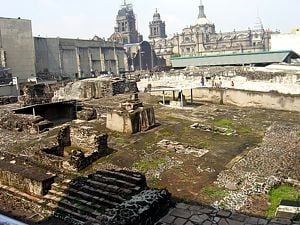
Vestiges of the Great Temple, on the side of the Metropolitan Cathedral
The third stage is from 1431, during the reign of Itzcóatl, and the staircase and part of the pavement are preserved; of the fourth, we know that the front was expanded with a platform adorned with undulating snakes, as well as braseros with the powers of the main gods of the temple, this stage dates from 1454, already with Moctezuma I as tlatoani.
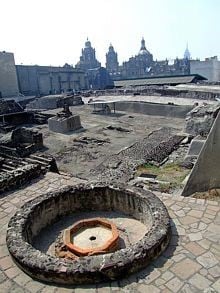
View of the remnants of the Great Temple
Of the last three we only have small vestiges: the fifth, dating from 1470 left us the stump platform; the sixth, dated 1500, the main facade with a wall with three snake heads, and finally, of the seventh, estimated between 1500 and 1521 we only preserve the slits. This stage is what the Spanish conquistadors contemplated upon their arrival in the Anáhuac Valley.
But the discoveries haven't stopped there. In March 2007 a monolith was located with the representation of the goddess Tlaltecuhtli, a deity related to the earth. In addition, nine offerings have been found that have flint squeals, green stone beads and skeletons of birds such as eagles, ibis, a wolf and seeds of cotton, pumpkin and chia.

Sculpture dedicated to the god Tláloc
In addition, in the space where the monolith was located were copal bars, bone punches used for self-sacrifice, charred feathers and maguey feathers. It is quite possible that this offering has been put in that place as a ritual to lay the wall that enthred the monolith, and there have probably been sacrifices and offerings of blood.
According to the researchers of the Major Temple Project, since the year of their fortunate encounter, 147 offerings have been recovered in the Temple that equate to more than 600 objects related to Mexican culture.
But this does not end here, the investigations in the hole left by the monolith follow, since it is thought that possibly, it was the entrance to a mortuary chamber, that is, the tomb of some Huey Tlatoani, so we will have our attention in the following months, waiting for news.

Chac Mool
The Snail of Time
To start your tour, you better take as an introduction to the museum, a tour of the great pyramid, with the temples of Tláloc and Huitzilopochtli, Tezcatlipóca, Quetzalcoatl, the area of the Ball Game and Tzompantli, all in order to combine the stage, the objects found and your imagination, to return to the past.

Mictlantecuhtli, God of Death and Lord of the Mictlan
The museum is shown in the form of a snail: once you enter, you can not return, since its design makes you follow the path from one room to another without missing any exhibits. You can use the educational services offered here as guided tours, brochures, audio guides in French and English.
Room 1 is dedicated to the Background. It shows an overview of the development of research on Mexica culture, a mock-up of the city's first painting featuring excavations of the Great Temple, the great monoliths and the location where the Cuatlicue, the Sunstone, Tizoc and Moctezuma appear, all of them in the Museum of Anthropology.

Offerings
Subsequently, the objects found in the first investigations that were carried out in the Main Temple in the early twentieth century are observed, until reaching the Project Templo Mayor that begins with the discovery of the sculpture of the goddess Coyolxauhqui.


Offerings on display at the Major Temple Museum
Here you will find descriptions of archaeologists Leopoldo Batres, Alexander von Humboldt and Manuel Gamio, thanks to which the search for evidence about our past began.
Room 2 corresponds to the offerings. Among the main finds made at this stage are more than 100 offerings, which were buried on the floors of the different construction stages of the building. Three types of offering have been found according to how they were deposited: filler offerings, basket offerings, and cash offerings; figurines, marine objects, animals, skulls, knives, vessels, masks and precious stones make them up. Researchers interpret this as symbolic language to protect the Great Temple and as gifts to their gods, in exchange for good harvests and victories in wars.

A few years ago, it was discovered below the Chapel of Anima of the Metropolitan Cathedral, an offering of musical instruments and another with polychrome vessels, representing the wind god, the Old God, in some shell objects.
Room 3 is dedicated to tribute and trade. The economic, political and military system of the Mexicas to the other Mesoamerican peoples was manifested through the tribute and control of the main trade routes.
Commercial activity was of vital importance to the Mexicas, because through their traders or pochtecs, they jointly carried out exchange and espionage activities on the peoples they wanted to conquer. Among the materials obtained in the excavations of the Great Temple are various raw materials and processed products that come from places far from Tenochtitlan and that manifest the presence of these two activities.

Brasero with Tlaloc's face. Room 5
Room 4 introduces Huitzilopochtli. The Mexicas soon managed to conquer large territories and their warrior supremacy is represented in the two Eagle warriors who met on the north side of the Main Temple, in the House of Eagles, made of mud and which are 1.60 meters high; they met along with 171 warriors in recession (when a child was born he decided whether he would be a warrior).

Flora and fauna.
Room 6 In this room are some pieces related to Huitzilopochtli, such as reclining banner holders on the staircase, representing huitzilopochtli's brothers, known as the Centzohuitzanhua; Huehuetéotl, God of Fire, who inhabits the center of the universe and Mayahuel, Goddess of the Maguey and Pulque, which was a ceremonial drink.
Room 5 belongs to Tláloc. The northern sector of the Tenochtitlan Main Temple was dedicated to Tláloc, Lord of Water and Fertility. Here, the god receives us in the form of a blue pot, a symbol of fertility, as it contains water, a vital element for a society dedicated to agriculture, hence the abundance of vessels with the face of this deity.

Teotihuacana mask. Room 3
But the Coyolxauhqui represents the attraction of this room; as a first impression, a photograph is shown as it was found when it fell from the hill of zacatepetl. According to the myth, this Goddess, whose name means "that of the rattles on the cheeks", lies beheaded and dismembered at the base of the major temple building, after her brother Huitzilopochtli, threw her down the steps of the temple. Therefore, drops of blood are observed sprouting from his wounds and the head of the femur that emerges from his thighs.
This sculpture carved into a volcanic stone called trachyandesite, measures 3.25 in diameter and weighs 8 tons.
Room 6 is dedicated to Flora and Fauna. These elements were important in the lives of Mesoamerican peoples. Of 120 offerings excavated to date, remains of animals have been recorded in 58 of them, with more than 200 species recognized. Offering 23 shows us various elements of fauna, both terrestrial and marine.

Model of the ancient Tenochtitlan
The museumography of this space allows to relate some of the animal and plant species, placed at the top of the display case, with the archaeological remains of the different offerings located at the bottom.

Eagle Warrior, Room 4 of the Major Temple Museum
The room culminates with the reproduction of the tianguis or Tlatelolco market, where agricultural products that were sold or exchanged are observed.
Room 7 comprises historical archaeology. It tells here the arrival of the Spaniards, who in 1521 consummated the conquest of Tenochtitlan and the destruction of Mexican culture. It shows this, they are the remains of a sculpture of the goddess Coyolxauhqui.

Tzompantli, wall of the dead
You can also see the bases of columns and shields that belonged to the Spanish houses, which were built on ruins of the Major Temple, different objects brought from Europe and Asia during the colony, as well as objects manufactured in Mexico, copying European styles, such as crockery and figurines for birth.
Room 8 leads us on our way to the Mictlan. In it, you will find a small space where you will find two impressive, life-size mud figures depicting Mictlantecuhtli, God of Death and Lord of the Mictlan, where the dead go. All these pieces, as presented, were located in 1994, at the entrance of the north room of the House of Eagles.
Continuous work
Since 1991, the museum has a project called the Urban Archaeology Program, which is headed by 10 researchers and aims to rescue archaeological areas near the Main Temple, intervening some properties in which they are carrying out excavations.

Major Temple Panorama
An example of this is offering 102, found in the Ajaracas building (in front of the sacred enclosure), which contained a figurine of the God Tláloc, resulting in interesting scientific production and new publications, such as the book "10 Years of the Great Temple" published by INAH.
Nearly 20 years after the opening of the Museum of the Major Temple (opened in 1987), there is now a wide picture of the importance of what was the most important sacred space of the city of Tenochtitlan... and vestiges are still being discovered.
If you have the opportunity to visit this archaeological area, do not miss it, with the security that in one way or another you will share the same space where the union of two worlds, indigenous and Spanish and thus the birth of our current culture, took place.
Sources:
-Revista Buen Viaje revistabuenviaje.com/conocemexico/destinos/df/templomayor/museotemplomayor.php





